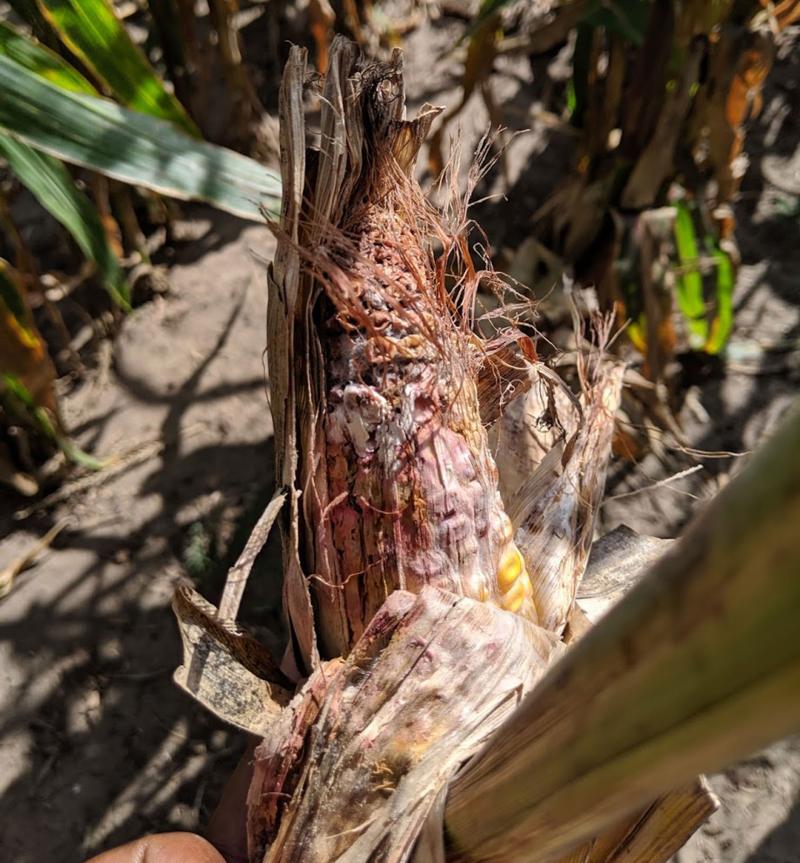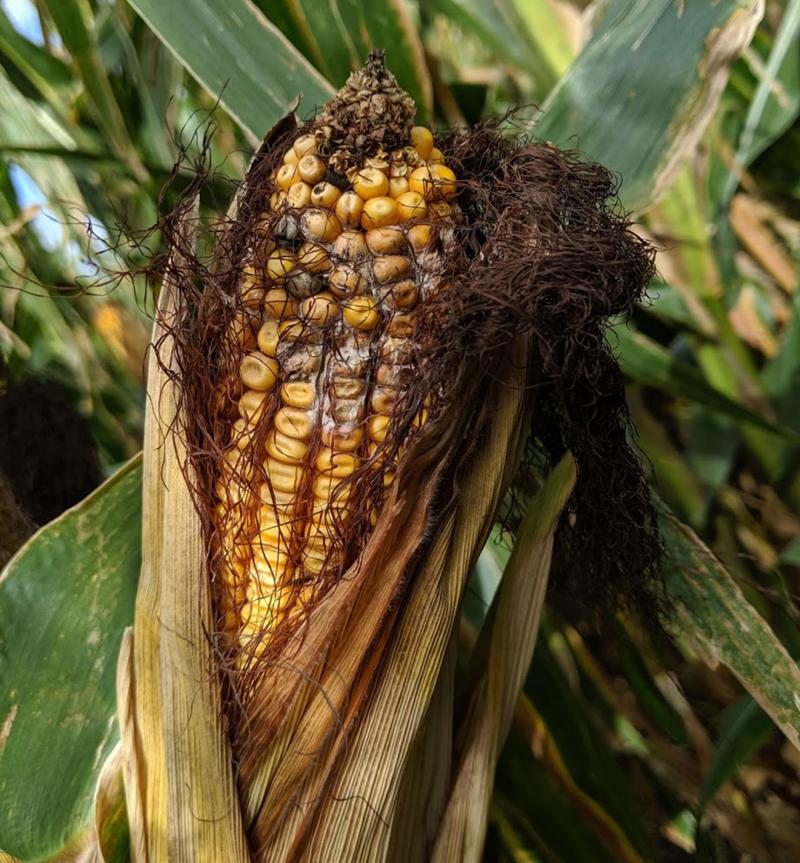
Written with contributions by Emmanuel Byamukama, former SDSU Extension Plant Pathologist.
Corn ear rots are one of the last diseases to scout for in the corn growing season, and sometimes they are ignored or forgotten entirely. Ear rots can cause yield loss in the form of grain quality at harvest, but also cause losses during storage. Ear rot pathogens can also produce mycotoxins which when high enough can be poisonous when consumed in grain products or feed stuffs.
Corn ear rot symptoms include rotting and discoloration of corn kernels on the cob. There are several corn ear rots that develop on corn in South Dakota, but the common ones being found this season are Gibberella ear rot and Fusarium ear rot. These are differentiated from each other by the color associated with infected kernels.
Gibberella ear rot also called red rot is characterized by reddish-pinkish color of infected ears (Figure 1) and tight husks adhering to the ear. Infection may start at the tip of the ear and may expand down the ear.
Fusarium ear rot can develop as scattered or clustered kernels on the ear with whitish – lavender fungal growth (Figure 2). Fusarium ear rot tends to develop in ears with injury caused by bird, insect feeding or hail damage. However, this ear rot can occasionally develop in uninjured ears of susceptible hybrids.
Disease Cycle

Gibberella and Fusarium ear rot pathogens overwinter on corn residue and in the soil. Spores are blown by wind, rain-splashed or spread by insects. The spores land and begin to germinate on the silk or directly on the injured kernels. Both ear rots are favored by cool, wet, humid weather when corn is at the silking growth stage. Occasionally, Fusarium stalk rot infection can cause ear rot through systemic development.
Scouting for Ear Fots
It is important to scout for corn ear rots before harvest to determine the type and level of ear rots developing. Scout fields by peeling back the husks and inspecting at least 10 ears and at least 5 random stops throughout the field. If >10% of ears in a field have >10-20% moldy kernels, the field should be scheduled for harvest as early as possible. Care should be taken to do little to no damage to the kernels during harvest. The grain should be cooled and dried to <15% moisture content immediately after harvest. Grain from fields where ear rot was a problem should be stored in a separate bin to avoid contaminating grain with no ear molds.
Ear Rot Management
- Select hybrids with high scores for ear rot resistance.
- Practice tillage (where practical) and rotation (rotate away from corn and small grains) to reduce fungal populations and overwintering inoculum.
- Control insects that can cause wounds on ears.
- Store infected grain separately to avoid contaminating the entire bin.
- Dry grain to < 15% moisture if grain is to be stored through the next summer.


